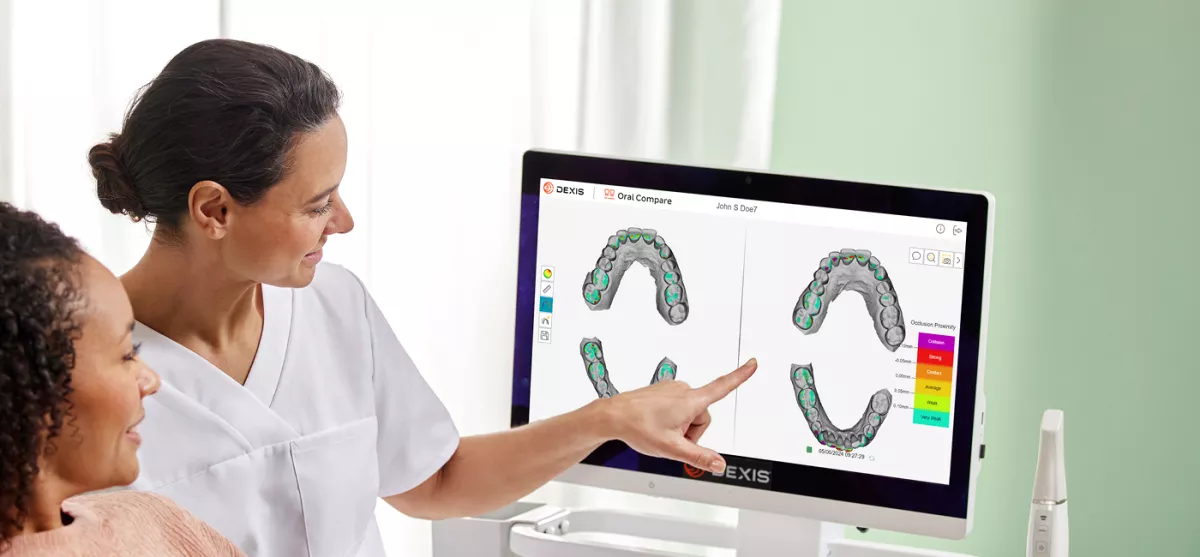
Grow your practice with a visual approach to proactive care
When it comes to improving dental patient outcomes, satisfaction, and retention, taking a proactive approach to general dentistry plays a central role. Indeed, proactive dental care is essential to maintaining oral health, preventing diseases, and improving the overall wellbeing of patients. There’s plenty of research to support these advantages:
- A Journal of Clinical Periodontology study found that people who proactively maintain healthy gums have a 25-30% lower risk of developing cardiovascular disease.1
- National Institute of Dental and Craniofacial Research (NIDCR) data reveals that patients who engage in proactive dental care report 60% fewer days of oral pain each year compared to those who do not.2
- The Journal of the American Dental Association (JADA) reported that people who complete regular dental visits and cleanings have an 80% higher likelihood of retaining all their natural teeth into their 70s, compared to those who do not.3
Along with improving patient outcomes, proactive dental care is also a powerful way to improve the patient experience, build patient confidence and loyalty, and open opportunities for new revenue and practice growth. Surveys indicate that patients who understand the benefits of proactive care are 70% more likely to maintain regular dental visits.4 By proactively and regularly monitoring your patients’ oral environment, you may also be more likely to detect issues that might otherwise go missed and intervene early to prevent more serious conditions that can impact patients’ quality of life.
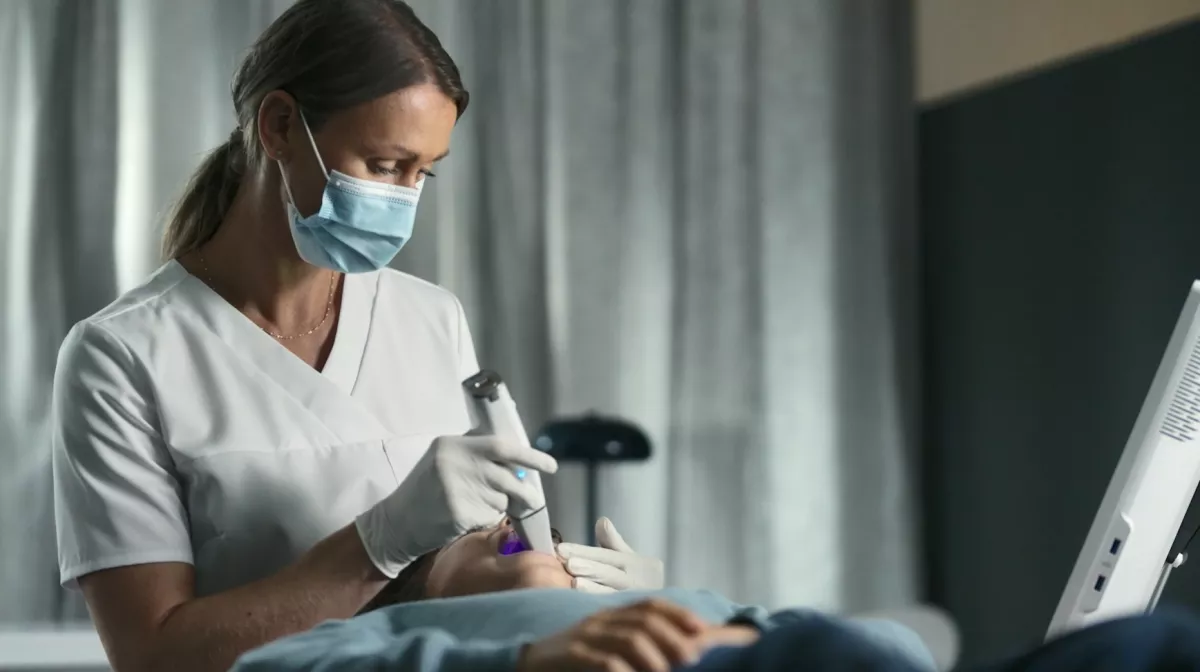
IS ScanFlow with Oral Compare:
Your Powerful Proactive Tool
Regularly scheduled dental hygiene visits provide the opportune time to engage in proactive dental care. It’s also important to make sure your patients are equally engaged in monitoring and managing their own oral health. 2D X-rays and intraoral scans are powerful tools for proactive care during these routine hygiene visits — along with the imaging software used to help clinicians and patients visualize, interpret, and understand what’s happening inside patients’ mouths.
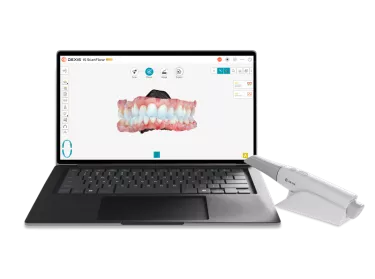
To further support proactive dental care during routine visits, the latest release of DEXIS IS ScanFlow now features Oral Compare. This new feature allows you and your patient to easily and quickly visualize changes in dentition over time. The latest IS ScanFlow update enables the quick capture of full arch scans. Your team can then layer the scans for a more complete picture of your patients’ oral anatomy, as well as generate color maps that illustrate changes in the patient’s mouth.
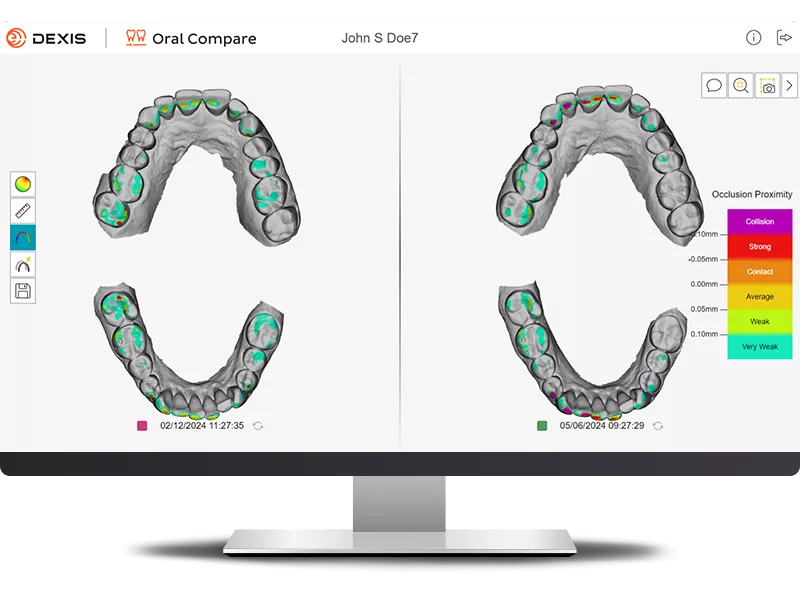
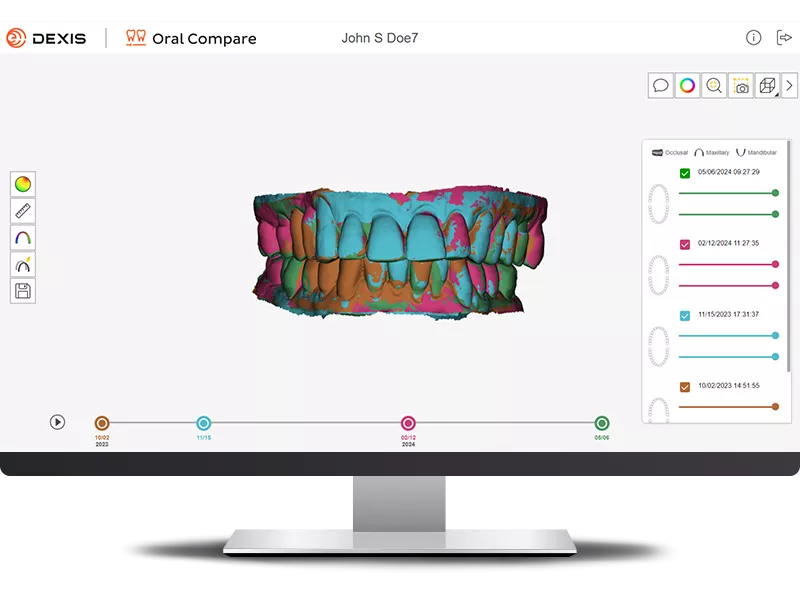
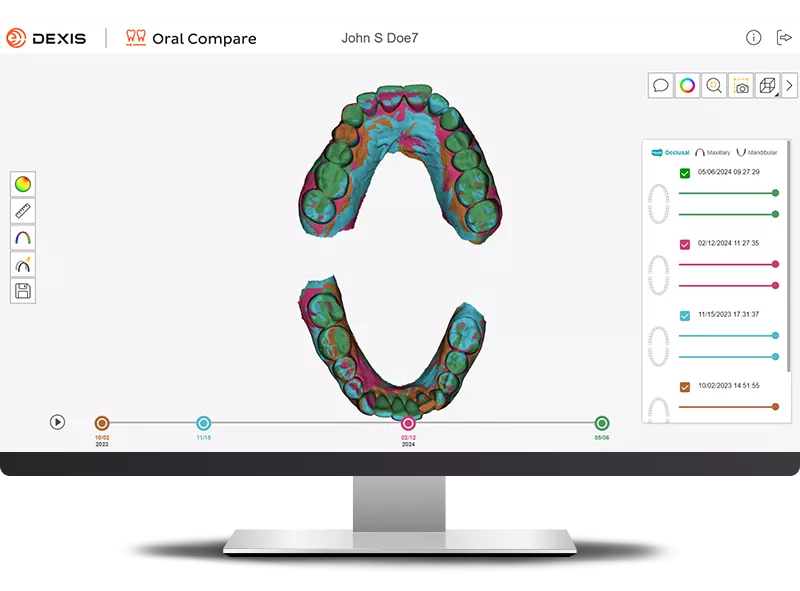
This helps you identify the first signs of gum recession, uneven bites, wear and tear from grinding, and other issues that may be the precursor to more serious conditions and complications. By intervening early to make patients aware of these problems and begin preventative or corrective treatment, you’re helping the patient potentially avoid the expense, inconvenience, and possible pain that come with more complex treatment and procedures.
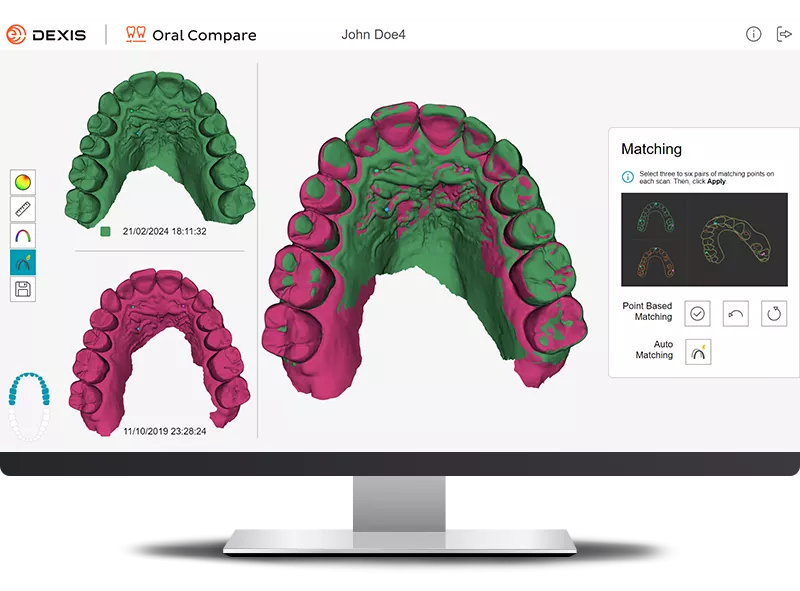

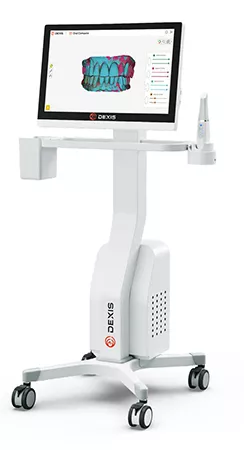
Grow Your Practice Proactively
With the newest DEXIS IS ScanFlow featuring Oral Compare, general practitioners have another powerful tool for proactively caring for their patients’ dental health as well as practice growth. By providing your patients with the ability to easily see changes in their dental anatomy over time, you’ll be educating them on the importance of routine hygiene and dental care while empowering them to take control of their oral health. You’ll also be confirming to your patients your commitment as an active partner in their patient experience, one who cares about their long-term wellbeing and who wants the best possible outcomes. What more could a patient ask for?
Learn more about the latest DEXIS IS ScanFlow software with Oral Compare, and how its advanced new features support your practice growth and patient health. Visit Simplify workflows and expand your practice.
Schedule your in-office demo
Your local DEXIS representative will contact you shortly


